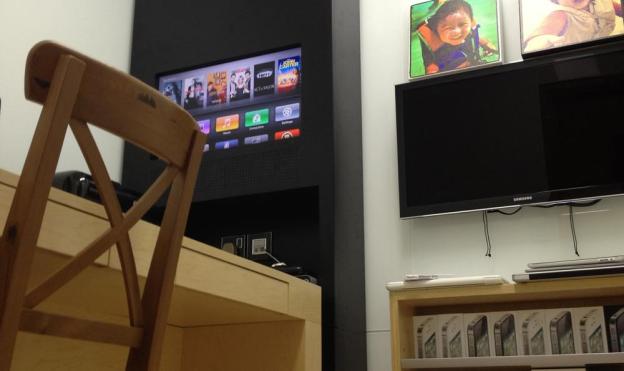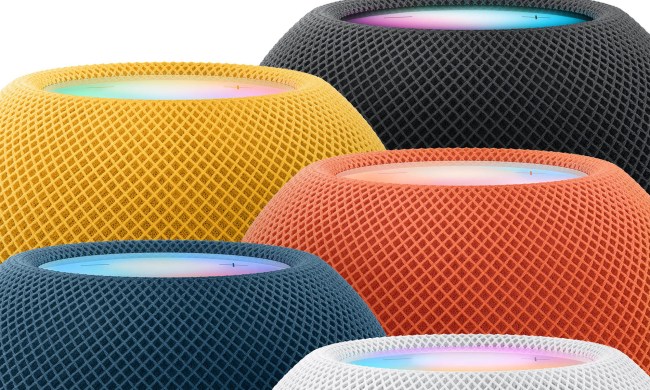
Described in a post on an Apple fan’s personal blog, the product designer David Wu redesigned his personal study by using design elements that would be found in a typical Apple retail location. The most eye-catching element within the home office is the black pillar that stretches from floor to ceiling and incorporates the glowing, white Apple logo. In addition, Wu installed a LCD panel into the pillar that displays a high definition feed from one of his Apple TVs. The LCD display usually runs through family photos in the screensaver and Wu occasionally uses the Apple TV to play music when he’s working. In order to recreate the Fetzer Maple Wood tables in an Apple store, Wu had a replica designed for the office in addition to adding working drawers. On the desk, Wu has positioned his iMac, Apple TV and printer in addition to a cute iClock.

Along the walls, Wu mounted glass panels on all sides in order to reflect light and create the illusion of a larger room. Wu didn’t place the glass at eye level above his desk, but did line the lower portion of the wall with a red-tinted glass to provide a bit of color. On the ceiling, Wu hung a light panel from four cables to copy the design of the Apple store.
Earlier this year, Wu attempted to launch a Kickstarter project for a new method to taking self-portraits with the iPhone and was called the eyeClick. The eyeClick was a case that wrapped around the iPhone 4 or iPhone 4S and allowed the user to take pictures with a remote control. The user could also attach a HD lens on the case to use the high definition camera on the back of the iPhone while still looking at the video feed on the iPhone screen. Unfortunately, Wu was only able to raise two thirds of the required investment before the end of the Kickstarter campaign.


[Photo credit: David Wu]


